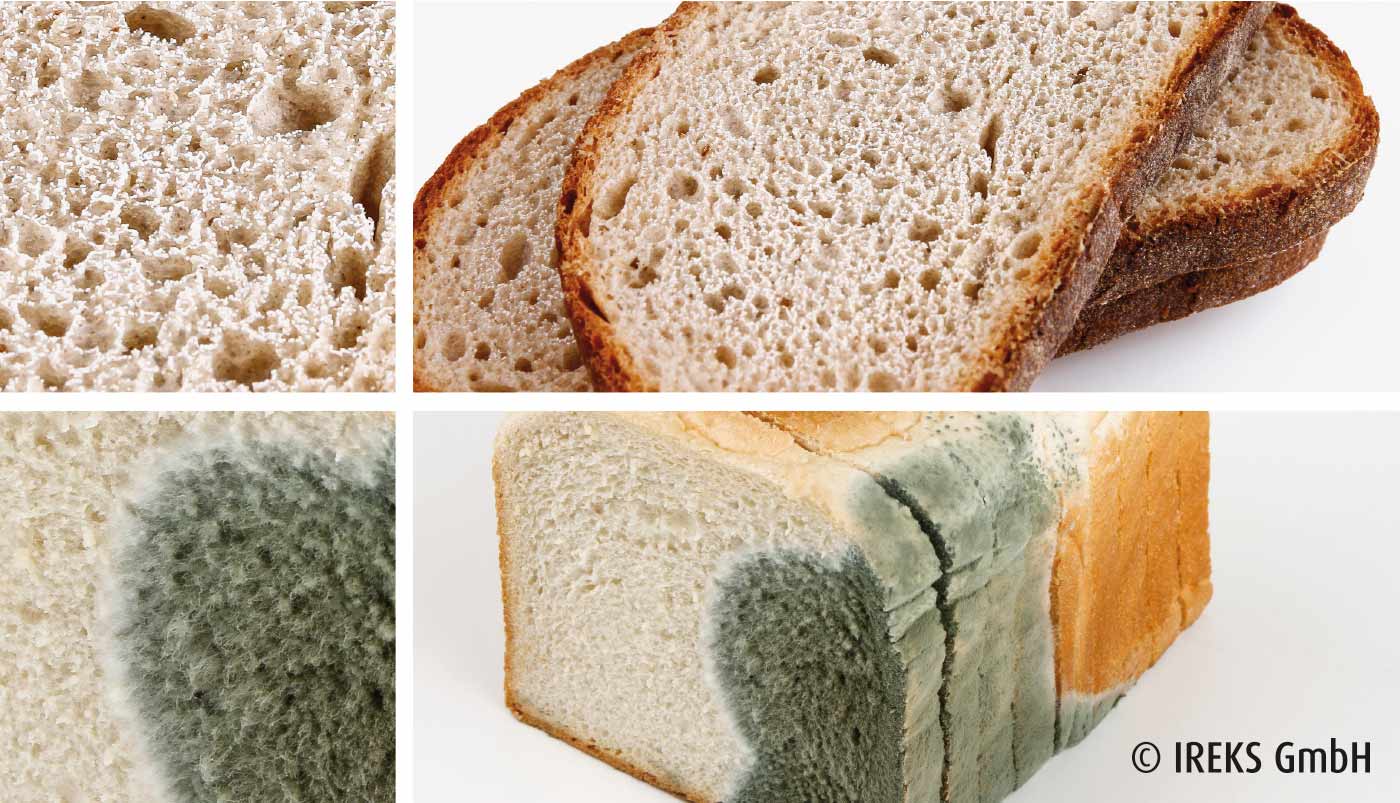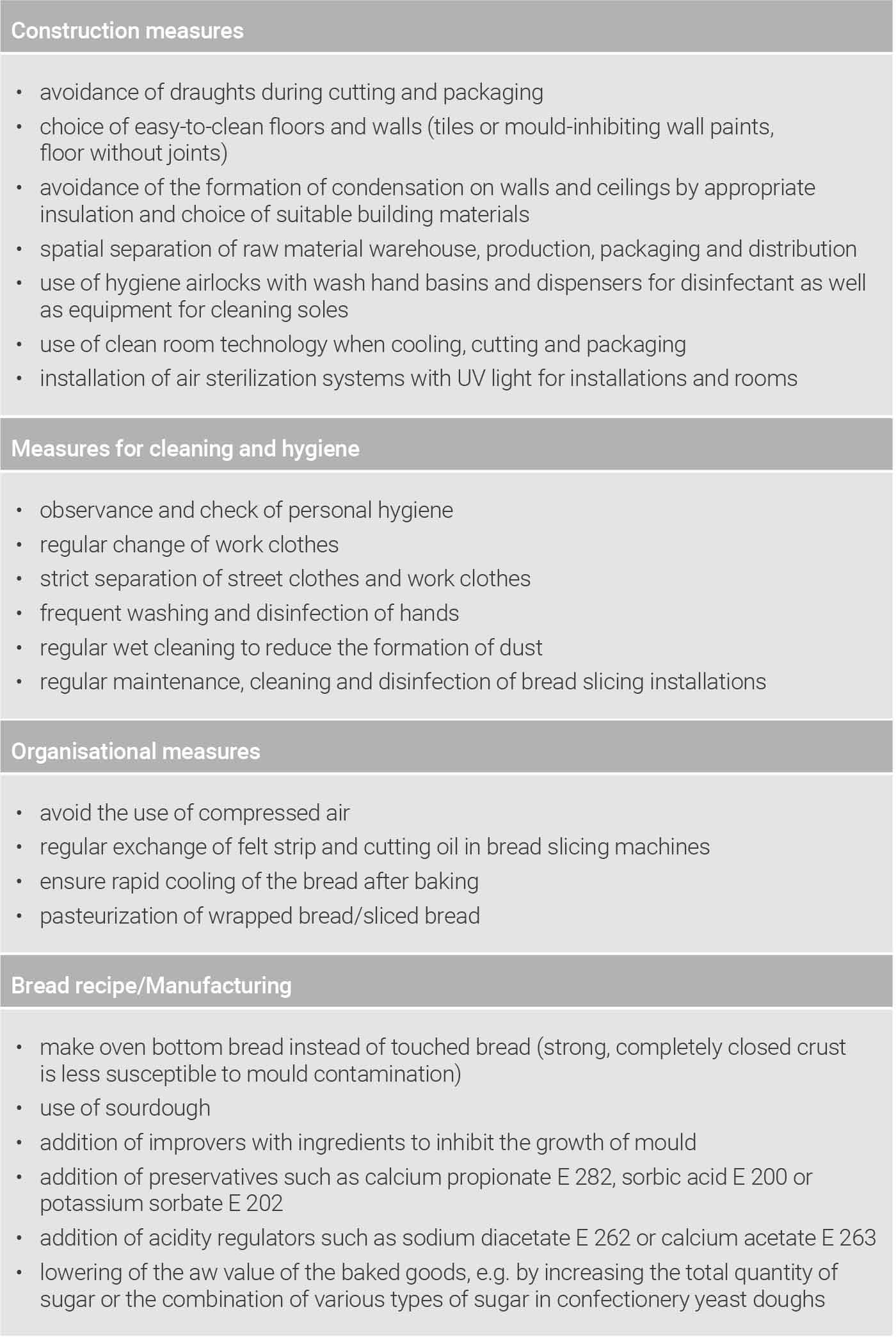Numerous types of mould fungi exist of which a few non-pathogenic types are also used for the production of foodstuffs (e.g. cheese, salami). Roughly 20 of the types of pathogenic mould fungi occur in the area of the bakery and the confectionery bakery as spoilage organisms. Among these are types of the genus Penicillium, Mucor and Aspergillus.
Immediately after the baking process, the baked goods are practically sterile. Mould fungi and mould fungi spores have more or less been killed off. The usual mould fungi already die at around 50° C. The mould fungi spores are more resistant and survive short-term effects of temperatures of up to 80° C. This means that baked goods infested by mould are contaminated after the baking process and then growth of the moulds takes place.
The contamination routes of mould fungi and mould fungi spores are diverse. The baked goods are mainly contaminated during cooling, cutting and packaging by direct transmission (contact contamination) or by indirect transmission (via the air). The air count of mould fungi spores can be up to 1,000,000 spores/m3. Mould contamination frequently occurs in sliced bread, touched bread as well as very lightly-coloured or pre-baked goods.
For growth, mould fungi require a relatively high content of water or a high activity of water (aw value) respectively. With this, poorly baked goods and baked goods with a filling or topping rich in water are especially susceptible.
The pH growth limitation levels of the mould fungi appearing on the baked goods are between pH 1.5 – 3 (minimum) and pH 8.0 – 8.5 (maximum). Nevertheless, influence can be taken by lowering the pH value of the baked goods (cf. Seibel 2001). Strongly acidified baked goods are generally less susceptible to contamination by mould than weakly acidified baked goods. Here the composition of the acids present is also of importance. The acetic acid present in sourdoughs or dough acidifying agents has a stronger mould inhibition effect than lactic acid. Moreover, the effect of several preservatives is heightened with a lower pH value.
A problem are the poisonous metabolites (mycotoxins) which are formed during the reproduction of mould fungi. Mould fungi can be recognized by the areas of mould which can occur in white, grey, green or black colours (cf. Freund 2005).
Contrary to its name in German (Kreideschimmel = chalk mould), Trichosporon variabile is not the result of a type of mould fungus, but of specific types of yeast. Coverings of chalk mould appear chalky-white and predominantly round.



